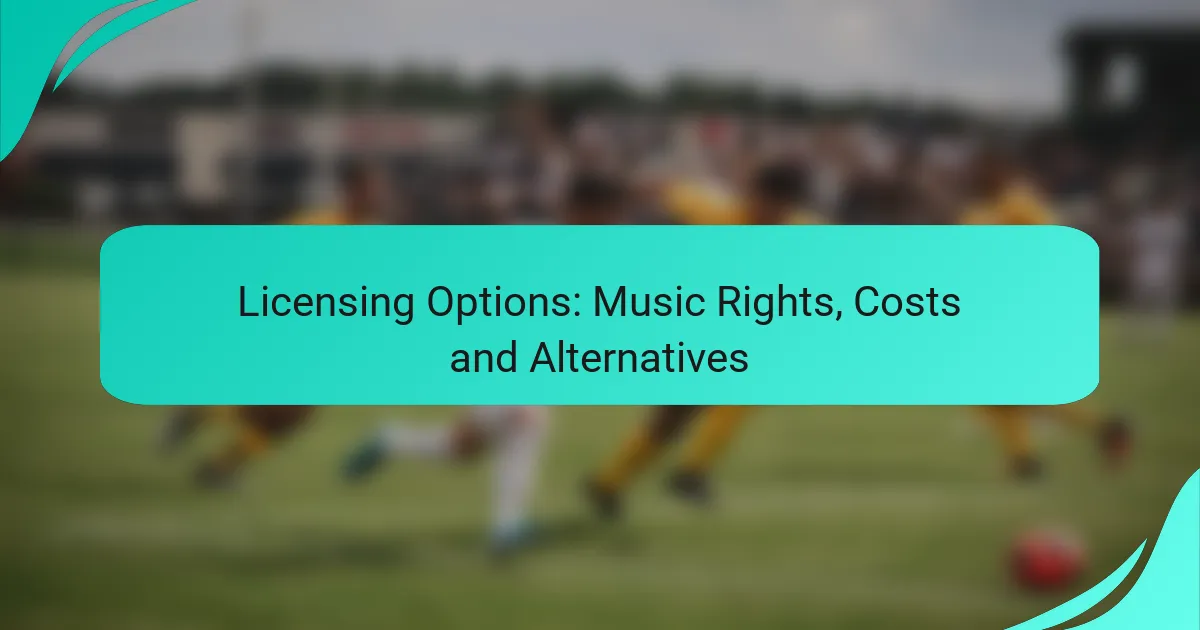Understanding music licensing options is essential for anyone wishing to use music legally, whether for commercial or personal projects. In the US, these options vary significantly in terms of rights, costs, and intended use, with prices ranging from a few hundred to several thousand dollars. Additionally, alternatives such as royalty-free music libraries and Creative Commons music offer cost-effective solutions for those looking to avoid the complexities of traditional licensing agreements.

What are the licensing options for music rights in the US?
In the US, music rights can be licensed through various options, each serving different purposes and contexts. Understanding these licensing options is crucial for anyone looking to use music legally, whether for commercial or personal projects.
Synchronization licenses
Synchronization licenses allow the use of music in conjunction with visual media, such as films, TV shows, and online videos. These licenses are typically negotiated directly with the copyright holder and can vary widely in cost, depending on the popularity of the song and the scope of its use.
When seeking a synchronization license, consider factors like the duration of the music use, the type of media, and the distribution channels. It’s advisable to start negotiations early, as these agreements can take time to finalize.
Mechanical licenses
Mechanical licenses are required when music is reproduced in physical formats, such as CDs or vinyl, or in digital formats like downloads and streaming. In the US, these licenses are often obtained through organizations like the Harry Fox Agency, which simplifies the process for users.
The cost of mechanical licenses is usually based on a per-unit fee, often set at a few cents per song. It’s important to ensure that you have the appropriate licenses before distributing any music to avoid copyright infringement.
Public performance licenses
Public performance licenses are necessary for playing music in public spaces, such as restaurants, bars, and events. These licenses are typically managed by performance rights organizations (PROs) like ASCAP, BMI, and SESAC, which collect fees on behalf of songwriters and publishers.
The fees for public performance licenses can vary based on factors like the size of the venue and the frequency of music played. Businesses should assess their music usage and contact a PRO to obtain the appropriate licenses to avoid legal issues.
Master use licenses
Master use licenses grant permission to use a specific recording of a song. This type of license is essential when you want to use a particular version of a song in your project, such as a film or advertisement. Like synchronization licenses, these are often negotiated directly with the rights holder.
Costs for master use licenses can be substantial, especially for well-known tracks. It’s wise to budget accordingly and consider alternative recordings if the desired track is prohibitively expensive.
Direct licensing agreements
Direct licensing agreements involve negotiating terms directly with the rights holders, bypassing intermediaries like PROs or licensing agencies. This approach can provide more flexibility and potentially lower costs, but it requires thorough knowledge of copyright laws and negotiation skills.
When pursuing direct licensing, ensure you clearly outline the terms of use, duration, and compensation. This method can be beneficial for independent artists or small businesses looking to use music without incurring high fees from larger organizations.
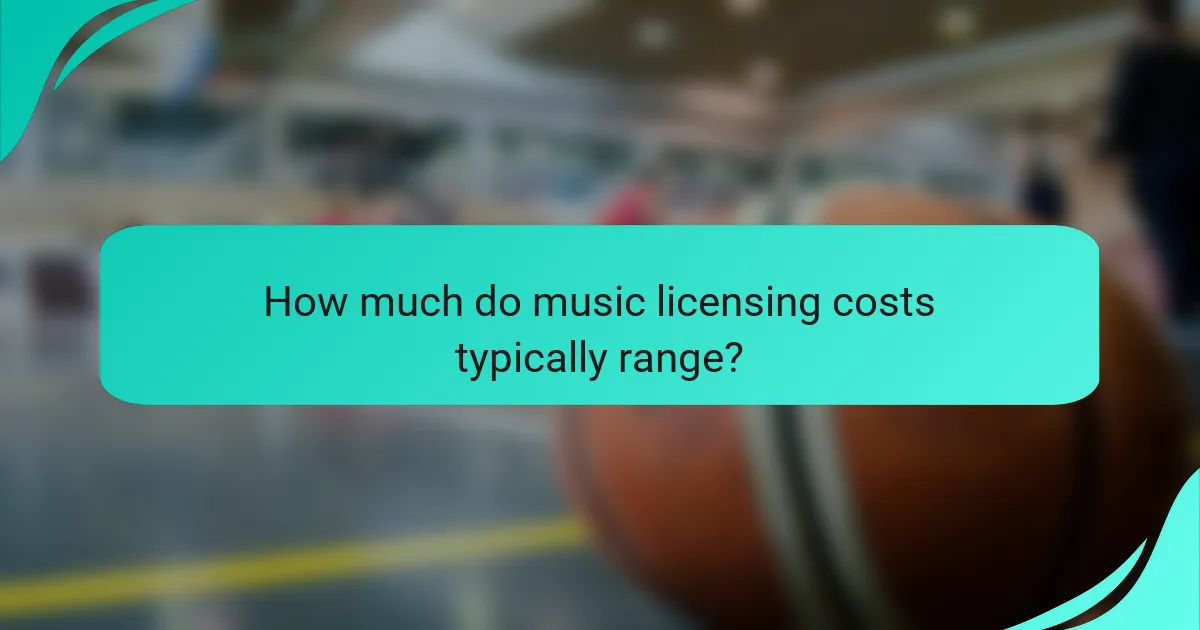
How much do music licensing costs typically range?
Music licensing costs can vary widely based on the type of license, the popularity of the music, and the intended use. Generally, these costs can range from a few hundred to several thousand dollars, depending on the specific requirements and rights involved.
Cost of synchronization licenses
Synchronization licenses, which allow the use of music in audiovisual works like films and commercials, typically range from a few hundred to several thousand dollars. The price often depends on the popularity of the song and the scope of the project. For example, a well-known song used in a major film may cost significantly more than an independent artist’s track used in a small web series.
Cost of mechanical licenses
Mechanical licenses are required for the reproduction of music, such as when a song is pressed onto CDs or distributed digitally. The cost for these licenses is often calculated per copy sold, commonly around 9.1 cents per copy in the U.S. However, for larger projects or well-known songs, this cost can increase based on negotiations with the rights holder.
Cost of public performance licenses
Public performance licenses are necessary for playing music in public venues, such as restaurants or concert halls. These licenses can vary significantly based on factors like venue size and expected audience. Typically, costs can range from a few hundred dollars annually for small venues to several thousand for larger establishments or events.
Factors affecting licensing costs
Several factors can influence music licensing costs, including the type of license, the popularity of the music, and the intended use. For instance, a high-profile song for a national advertisement will generally command a higher fee than a lesser-known track for a local event. Additionally, the duration of use and geographical reach can also affect pricing, with broader distribution often leading to higher costs.
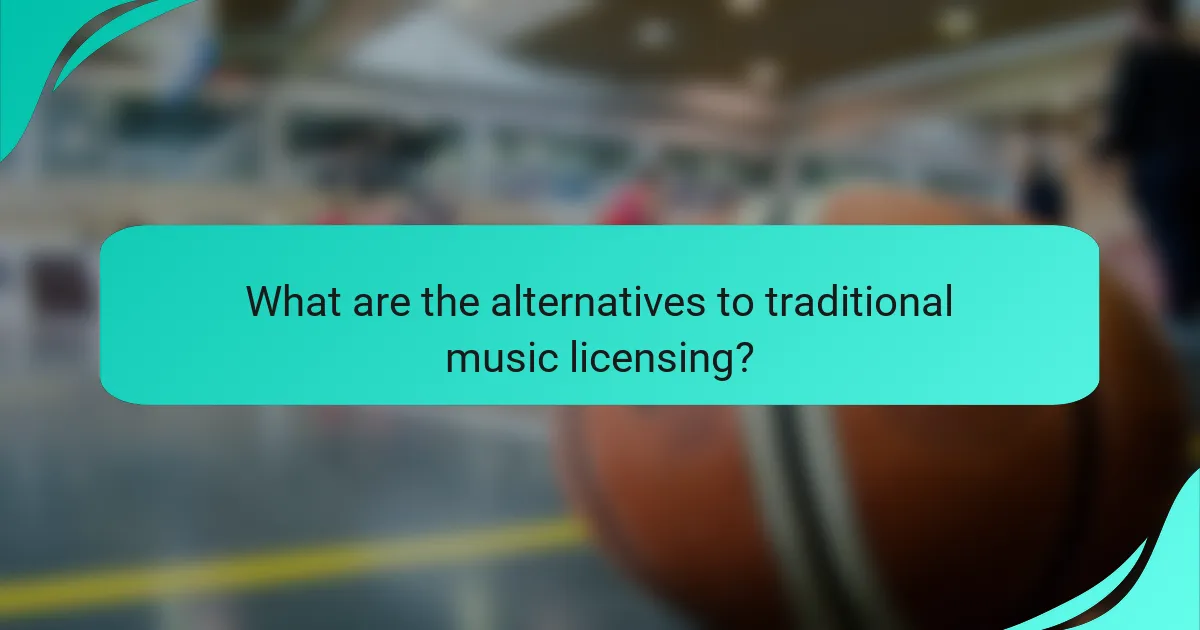
What are the alternatives to traditional music licensing?
Alternatives to traditional music licensing include royalty-free music libraries, Creative Commons music, and stock music platforms. These options provide cost-effective solutions for individuals and businesses seeking to use music without the complexities of standard licensing agreements.
Royalty-free music libraries
Royalty-free music libraries offer a wide range of music tracks that can be purchased for a one-time fee, allowing users to use the music without paying ongoing royalties. Popular platforms like AudioJungle and PremiumBeat provide diverse genres and styles, making it easy to find suitable tracks for various projects.
When selecting royalty-free music, consider the licensing terms carefully, as some may have restrictions on commercial use or require attribution. Prices typically range from $10 to $200 per track, depending on the library and the intended use.
Creative Commons music
Creative Commons music is a type of music that is shared under licenses that allow users to legally use, remix, and distribute the music, often for free. Websites like Free Music Archive and ccMixter host a variety of tracks that fall under different Creative Commons licenses, each with specific rules regarding attribution and usage.
Before using Creative Commons music, check the license type to ensure compliance with its terms. Some licenses may require you to credit the artist, while others may restrict commercial use. This option is particularly beneficial for budget-conscious creators.
Stock music platforms
Stock music platforms provide a library of pre-recorded music tracks that can be licensed for various uses, including videos, podcasts, and advertisements. Services like Epidemic Sound and Artlist offer subscription models, allowing users to access a vast collection of music for a monthly fee.
When choosing a stock music platform, evaluate the subscription costs and the breadth of the music catalog. Subscriptions typically range from $10 to $50 per month, depending on the platform and the licensing options available. Ensure that the license covers your intended use to avoid potential legal issues.
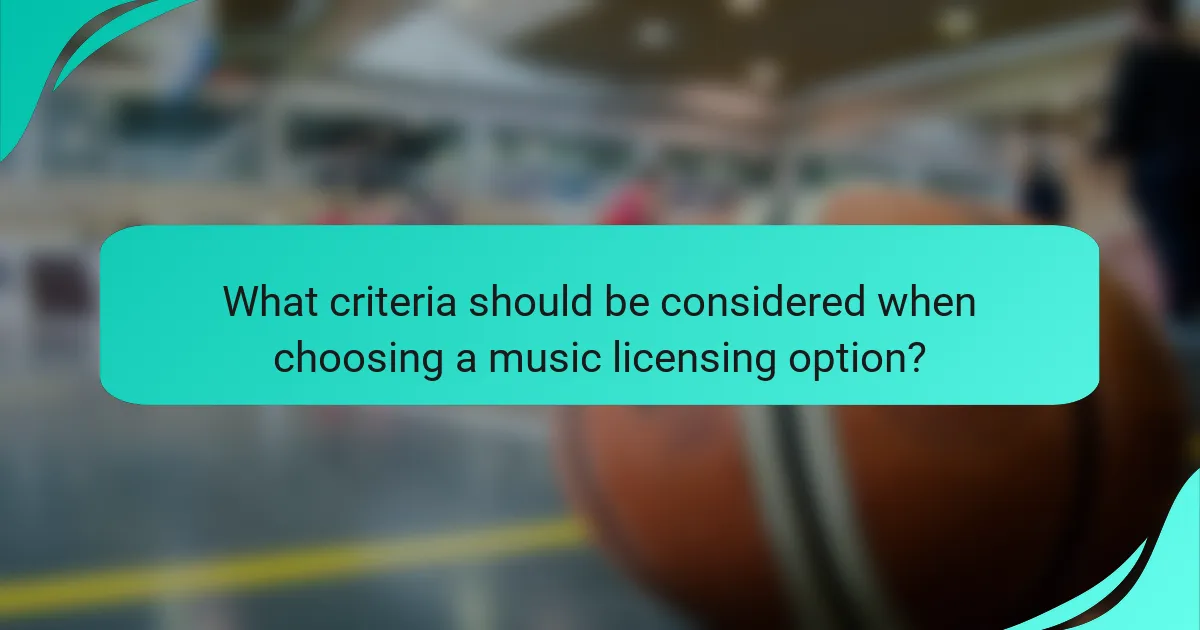
What criteria should be considered when choosing a music licensing option?
When selecting a music licensing option, consider the type of usage, budget constraints, and the duration of use. These factors will help you determine the most suitable licensing arrangement for your project while ensuring compliance with copyright laws.
Type of usage
The type of usage refers to how you plan to use the music, such as for commercial purposes, personal projects, or public performances. Different licensing options exist for various uses, including synchronization licenses for film and television, mechanical licenses for physical media, and performance licenses for live events.
For example, if you’re producing a video for YouTube, you may need a sync license, while a podcast might require a different type of license. Understanding your specific needs will guide you in selecting the right option.
Budget constraints
Your budget will significantly influence your choice of music licensing. Licensing costs can vary widely, from low-cost options for independent creators to high fees for popular tracks used in major productions. It’s essential to establish a budget early on to avoid overspending.
Consider exploring royalty-free music or stock music libraries, which often provide affordable options for licensing. These alternatives can help you stay within budget while still achieving a professional sound.
Duration of use
The duration of use is another critical factor when choosing a music licensing option. Some licenses are granted for a specific period, while others may be perpetual, allowing indefinite use. Determine how long you need the music to avoid future complications or additional costs.
For instance, if you plan to use a track in a short-term marketing campaign, a temporary license may suffice. However, for ongoing projects, consider investing in a longer-term or perpetual license to ensure uninterrupted access to the music.
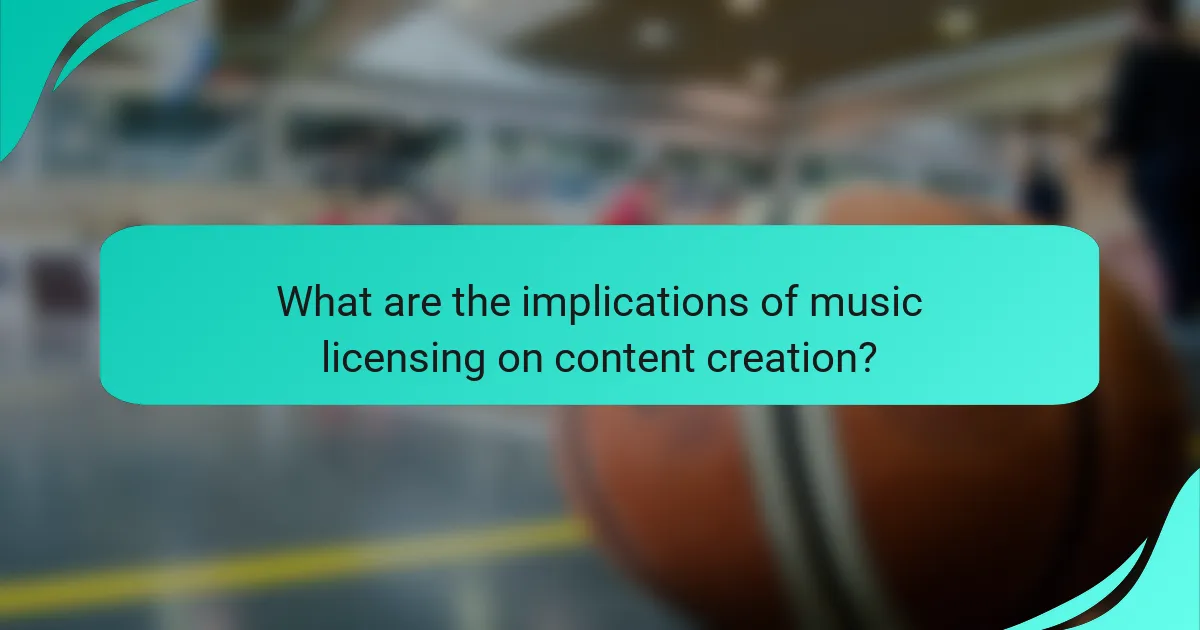
What are the implications of music licensing on content creation?
Music licensing significantly impacts content creation by determining how and when music can be used legally. Understanding these implications helps creators avoid legal issues and enhances their content’s value.
Legal consequences of unauthorized use
Using music without proper licensing can lead to serious legal repercussions, including fines and lawsuits. Copyright holders have the right to enforce their claims, which can result in costly settlements or court judgments.
Creators may face takedown notices from platforms like YouTube or Instagram, leading to loss of visibility and potential revenue. It’s crucial to secure the appropriate licenses before incorporating music into any content to mitigate these risks.
Impact on brand reputation
Unauthorized use of music can damage a brand’s reputation, as it may be perceived as unprofessional or disrespectful to artists. Consumers are increasingly aware of copyright issues, and negative publicity can arise from legal disputes.
Maintaining a positive brand image involves respecting artists’ rights and using licensed music. Brands that prioritize ethical content creation are more likely to build trust and loyalty among their audience.
